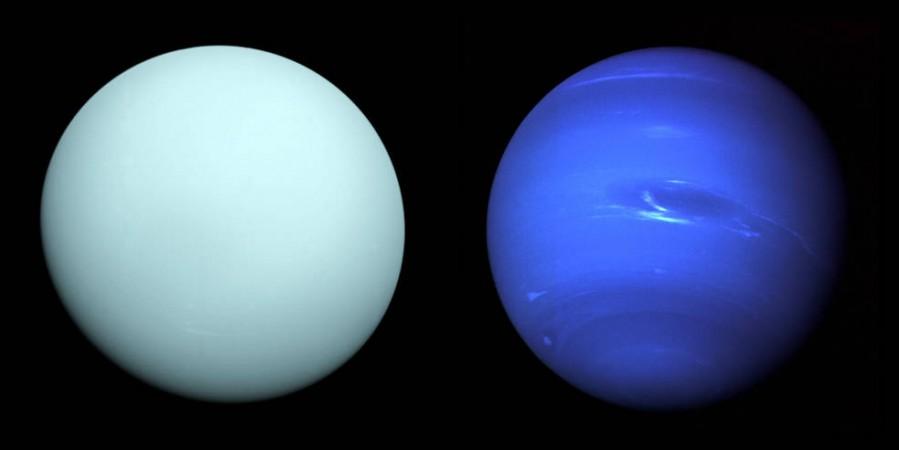
In its early years, something massive, about twice the size of Earth rammed into Uranus, tilting the planet off axis and also possibly giving the planet its freezing temperatures.
A new study led by a team of astronomers from the University of Durham has found that a massive collision could explain several features of the planet's long evolution through the years. For the first time ever, this team set out to find exactly how the planet evolved over time.
The study confirmed a long-standing theory that during the initial years of planet formation, and the early years of the Solar System itself, Uranus must have gotten hit by a massive proto-planet made of ice and rocks, says a report put out by the University. Simulations also suggest that the reason for the planet's abnormally cold temperatures could be partly attributed to the heat coming out of its core being trapped by debris which forms a shell at the edge of the planet's icy layers. This trapped internal heat could partly explain why the outer atmosphere of Uranus is so cold – at negative 216 degreeCelsius.
Uranus spins on its side, explains Lead author Jacob Kegerreis, of Durham University. Its axis is almost pointing at right angles to nearly all other planets in the Solar System. He added, "This was almost certainly caused by a giant impact, but we know very little about how this actually happened and how else such a violent event affected the planet."
The massive impact might have also been responsible for the molten ice and lopsided lumps of rock inside the planet. It also explains the planet's off-centre magnetic field.

For the study, researchers ran more than 50 different impact scenarios, he explained. This was an attempt to try and recreate the conditions that gave birth to what is now Uranus using a supercomputer.
"Our findings confirm that the most likely outcome was that the young Uranus was involved in a cataclysmic collision with an object twice the mass of Earth, if not larger, knocking it on to its side and setting in process the events that helped create the planet we see today." The event might have occurred around four billion years ago.
The giant rock ramming into the planet could also explain its Moons and rings, says the report. The spewing out of rocks from the impact collision likely left a massive amount of material spinning around Uranus which then clumped up together to form its many inner moons.
Studying Uranus is important, say the astronomers because it resembles and behaves like an exoplanet—planets that are found outside the Solar System orbiting other stars.















